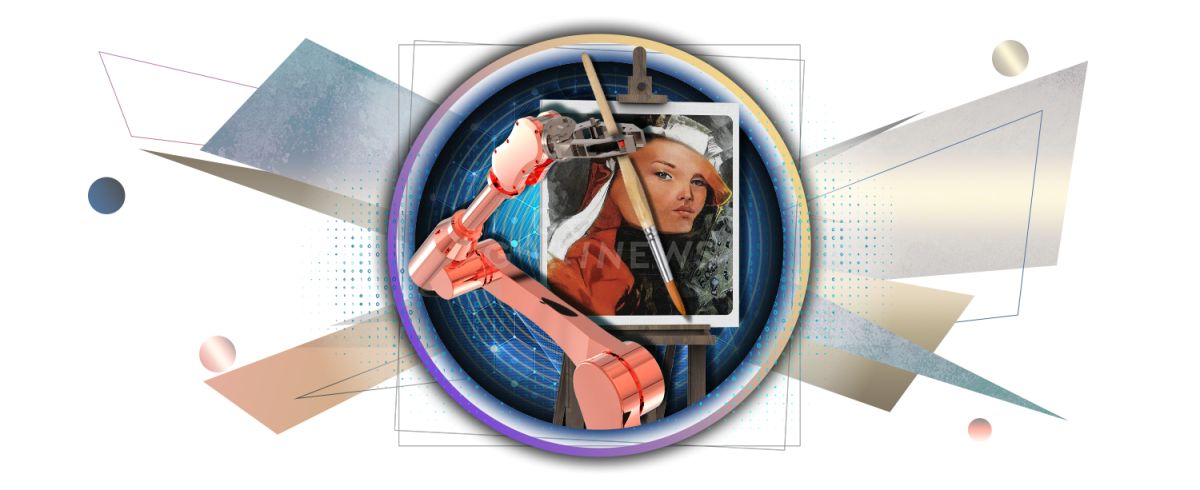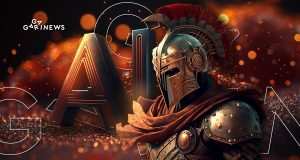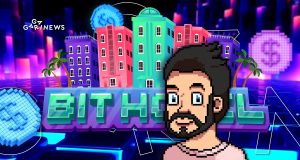What is generative art?

Generative art is a creative process that is carried out in part or entirely by an autonomous system. Creators, including NFT artists, can use algorithms as tools to create unique and unpredictable works of art.
On this page
The algorithmic generation of new concepts, color combinations, ornaments, and shapes is at the heart of generative art. Many artists who hold conservative views on creativity are skeptical of this direction, believing that such works are solely the result of computer technology. Is this true?
When did generative art first emerge?
The modern prototype of generative art emerged long before computers. William Hayes, an English composer and organist, was one of the forefathers of creativity based on random coincidences.
Hayes first described the phenomenon of aleatoric music in his book The Art of Composing Music by a Method Entirely New. It consists of randomly created satirical works. The musician, who had a non-trivial sense of humor, was confident that this approach would work for even “the worst talents.”
What did Hayes suggest? Blots pushed him to compose music by chance. A single melody was composed from the notes that were created from the inkblots that fell on the musical staff. An improved technique involved the use of dice: the musician wrote down small passages, rolled the dice, and built a musical sequence based on the values that came out.
A kaleidoscope was another prototype of generative art that appeared in the 19th century. The invention has served as a kind of idea generator for authors who are inspired by unusual color and shape combinations.
The invention of the computer was a significant step in the evolution of random creativity. Max Bense, a German philosopher specializing in informational and semiotic aesthetics, was at the forefront of the generative creation of art objects. He aimed to incorporate mathematical formulas into the foundation of creativity and to draw the public's attention to the fact that authors create not only final objects, but also processes.
Principles of creating generative works
- Identifying the primary parameters of the creative process – shapes, sizes, colors, and so on.
- Inputting arbitrary parameter values into the algorithm.
- Obtaining an item through chance creativity.
Generative NFTs are created using smart contracts and stored on the blockchain. Artists working in this genre are not required to draw each element of the collections on their own. To create an NFT, all that is needed is to identify the primary parameters and determine the potential fluctuations in each of them. At the final stage, you should create smart scripts for the further variations of work and set a limit on their number.
Generative art projects in the NFT world
Art Blocks
It is an Ethereum-based NFT platform that allows users to generate NFTs on demand. On this platform, users can select the appropriate style, pay for it, and receive a one-of-a-kind work of art that was randomly generated by the algorithm and sent to the user on the Ethereum account.
Projects created on Art Blocks are often among the most expensive and popular NFTs on the market. They include Fidenza #313 and Ringers #736.
Autoglyphs
Larva Labs, the creators of CryptoPunks, have created this generative art project. It was launched in 2019 as a charity fundraiser for a climate change foundation.
Autoglyphs is a collection of 512 monochrome static patterns with an initial creation cost of 0.2 ETH. According to nftpricefloor.com, the collection's market cap is $173,568 press-time.
Fidenza
It is a project hosted on Art Blocks and created by Tyler Hobbs. This is a collection of 999 Ethereum-based generative NFTs released in 2021. Fidenza #313 gained international recognition when it was sold for 1 ETH ($3.3 million at the time of sale).
Solvency
The project uses a generative adversarial network (GAN). It enables the creation of textured moving images from 35mm photographs.
Where can you buy generative art NFTs?
You can purchase generative art NFTs on both traditional marketplaces (OpenSea, Nifty Gateway) and specialized platforms (Art Blocks, Brain Drops, Gen.Art).
The content on The Coinomist is for informational purposes only and should not be interpreted as financial advice. While we strive to provide accurate and up-to-date information, we do not guarantee the accuracy, completeness, or reliability of any content. Neither we accept liability for any errors or omissions in the information provided or for any financial losses incurred as a result of relying on this information. Actions based on this content are at your own risk. Always do your own research and consult a professional. See our Terms, Privacy Policy, and Disclaimers for more details.

























